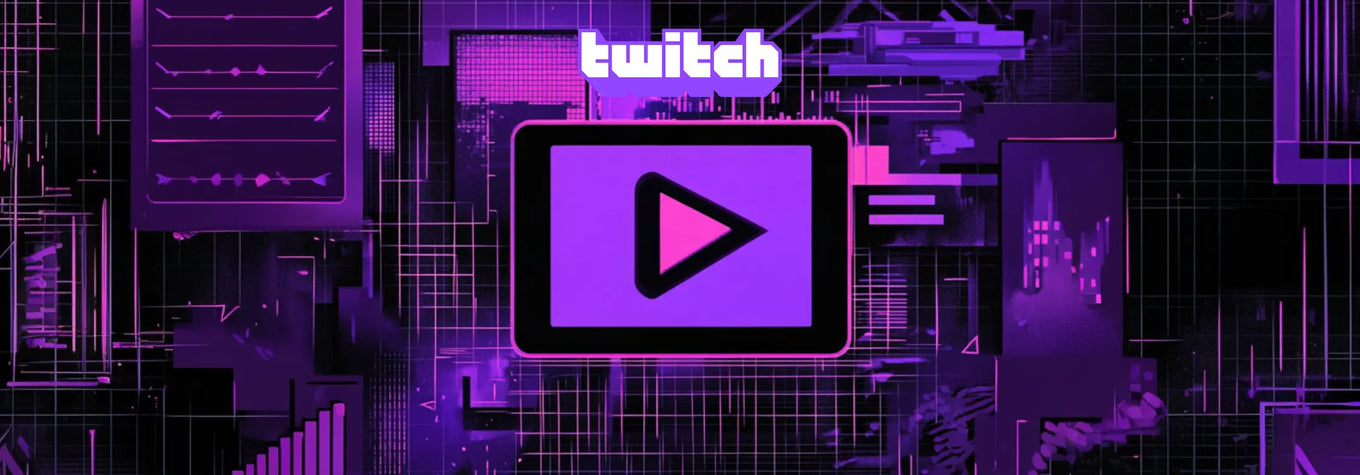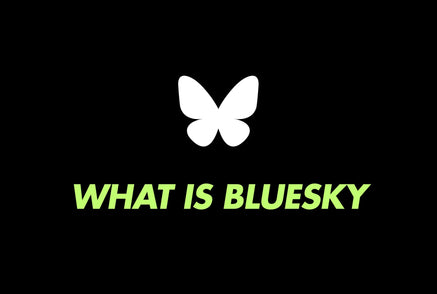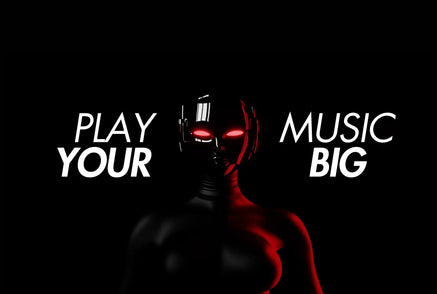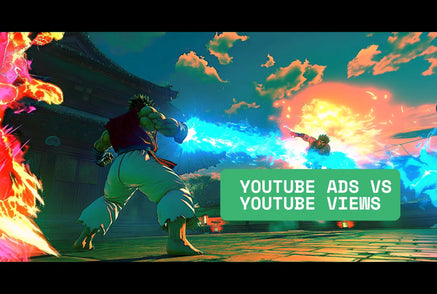How To Become The Best Music Streamer on Twitch?
If you are a musician or entertainer, chances are that you have already heard of the live streaming platform Twitch. The segment of music streaming is not surpassing the most popular categories like gaming, but it keeps showing high activity. Some channels presented on the platform repeat the same channels on YouTube. These are usually lo-fi music streams for 12 or 24 hours with no pauses.

Music streaming on Twitch is presented by various musicians, DJs, and singers. Sometimes, people launch streams from shows or local parties, and such content always has spectators, especially if it's a common genre.
Still, does it make sense to enter Twitch to stream music? Who can take advantage of this type of streaming? In this article, we’ll try to find answers to these questions.
|
Channel |
New Followers (30 Days) |
Notable Fact |
|
dtbeatss |
+15,086 |
Independent producer, rising fast |
|
vacaxionesmorvelasquez |
+8,309 |
Spanish-language music content, a unique case in Twitch music streaming segment |
|
FrenchStallion |
+4,888 |
Focus on beatmaking & performance |
|
Tiesto |
+4,400 |
Yes, the Tiësto — EDM legend |
This table showcases the fastest-growing music channels on Twitch over the last 30 days.
Why Do Music Streamers Choose Twitch?
The interactive live-streaming platform known as Twitch is a subsidiary of Amazon. Founded in 2011, it was primarily used by gamers at first. Today, all this has changed: the platform now hosts talk shows, live concerts, and other content by artists and entertainers from different fields. This means you can use it to live stream a concert or a playlist of your music, among other things. Still, why did this platform become so popular among music lovers? Why do people choose Twitch for their music streaming efforts?
Twitch opens doors to new listeners. On music streaming platforms, you have one audience; on social media, you have the other one. Twitch is set as a streaming platform with numerous topics, and music is one of them. People come to Twitch to try something new, something that doesn't sound like regular music on Spotify or Apple Music. That's why amateurs choose to stream on Twitch — because they open themselves up to a new audience.
Today, Twitch hosts 1,034 live channels with a total of 195,240 viewers watching broadcasts live. As of now, the platform has accumulated over 39 million hours of music streaming, with an average of 9,700 hours per hour and approximately 130,000 hours in peak time.
Twitch allows you to monetize your streams without partnerships. When you stream music, engage with fans, and build strong communication, your viewers feel like they're inside a community. The fact that they stay on your stream means they're interested in what you do, and some of them may even support you with donations. Moreover, if the fans are excited about your content, they activate a paid subscription, and this provides additional support for you.
Music streaming is constantly growing on Twitch, showing a steady 3,3% uptick in the number of channels. Moreover, the viewership increased by nearly 10%. The largest growth was between January and June 2020, when the average Music category viewership rose from 6,9K to nearly 31K, mostly because of the pandemic.
Top-ranked streamers can make somewhere between 900$ and 30 000$ per month. Non-popular streamers make less than 100§ per month.
Another reason Twitch is a platform every music streamer should try is that the music category is not overwhelmed. You can take your place and develop your channel as a music streamer. For some reason, Twitch music streaming is similar to radio streaming. Musicians often push their tracks via radio services to become recognizable, and music streaming on Twitch creates the same effect. You can play your tracks by yourself. With a powerful stereo system to ensure proper sound quality, a good instrument, and a high-resolution camera, people will stay on your stream.
The number of daily viewers in the Twitch music category is now around 30-35 million, while around 2,5 million can be on the stream at the same time.
Last but not least, it's you who controls your presence on Twitch. The first time you go live to play music and talk to your audience, you can start with short sessions, up to 2 hours. Then, when you slowly gain followers and become more recognizable, you create a personal streaming schedule that not only suits you but also suits your audience as well.
Use social media to notify people about the upcoming broadcasts. Users will know you're available not only on music streaming services but on Twitch as well.
How to Start Making Money on Twitch?
Twitch offers you several ways of making money, based on where you are in the hierarchy of Twitch creators.
When you first sign up as a Creator, your only way of making money via Twitch is by linking your account to your merch store or another website where people can buy your music or access your goods.
All this changes when you have reached Affiliate status. Once this happens, viewers can subscribe to your channel at a set price per month. As an Фffiliate, you can start receiving ad revenue and earn income via so-called Cheermotes, which your viewers pay for. Reaching Affiliate status isn’t difficult. You have to go live for a total of 8 hours within the past month, have achieved an average of 3 viewers per stream, and have reached at least 50 followers.
Once you have streamed over 25 hours and reached an average of at least 75 viewers per stream, you can apply for Partner status. While the monetization options are the same as for affiliates (subscription, ad revenue, and Cheermots), a Partner-level account unlocks additional features that help you grow your channel. It also allows you to negotiate a custom deal with Twitch, which means you may be able to keep a larger percentage of your earnings.
Do You Have to Make Twitch Your Main Platform?
The decision to make Twitch your main platform for online presence depends on multiple factors. If you're creating a personal brand, your Twitch presence should be consistent. As was said earlier, start with short sessions and extend your streaming time. Another factor you should consider is whether you have something unique to offer. Even though you don't want to show your face on camera, you have to stand out. It doesn't make sense to start on Twitch if you're hoping to get quick benefits. It's a long game, and you have to make sure your presence on Tidal, Spotify, Amazon Music, and other platforms won't decline.
In June 2025, Amazon Music is considered the #1 channel with around ~713,000 viewer-hours. UFDMusic, a 24\7 music channel, comes with ~167,000, while other channels have much lower viewer-hours numbers. In 2024, there were around 39 million viewing hours in the Music category, which is 0,1% of all viewing hours on Twitch (20+ billion hours).
You can take advantage of Twitch and use it to promote your music on other streaming platforms. Display links on the text overlay so viewers can find you without leaving the broadcast. Creating a text overlay via OBS Studio or Canva takes a few minutes, so it's not a big deal.
How to Make Twitch a Part of Your Music Promotion Strategy?
Can you be a full-time streamer and promote your tracks on other platforms? Yes, it's possible, but it requires a systematic approach and understanding of where you are going. Start with the basics:
-
Set up a Twitch profile. Suggest a recognizable nickname and profile description. Pick a profile image, and connect your social media profiles.
-
Create a streaming schedule. Chaotic streaming won't work, as people won't know when to expect you to go live. Decide when you want to start a broadcast, and inform your audience before the start.
-
Invest in your streaming gear. Better devices mean better streaming quality, which leads to higher follower numbers. Whether you are a DJ or a musician who performs both music writing and singing, you'll need additional investments in instruments, audio recording tools, and powered speakers, among other essentials.
It's essential to establish a distinct channel on Twitch to differentiate yourself. Despite the fact that the music category is not as saturated as Gaming, you still need to establish yourself as a creator. It may be a part of your personal brand development strategy, meaning you can go beyond established standards and achieve better engagement. Create specialized content related to what you enjoy the most. If you’re more into anime or the gaming industry, LoFi Music, or another category, create music that matches these categories. Your content will be placed in less crowded discovery avenues, making it easier to get new listeners.
Take inspiration from consistent Twitch music streamers to build your audience and develop steady follower habits. Use a non-linear approach, developing collaborative formats, like DDG, for album creation.
Start a new chapter of online music streaming by getting on Twitch and connecting yourself with new listeners. Make your music heard!
Is Twitch a good platform for music streamers?
Can you play music on Twitch?
Can you post ads on Twitch broadcasts?
Can you monetize your Twitch streaming?
























